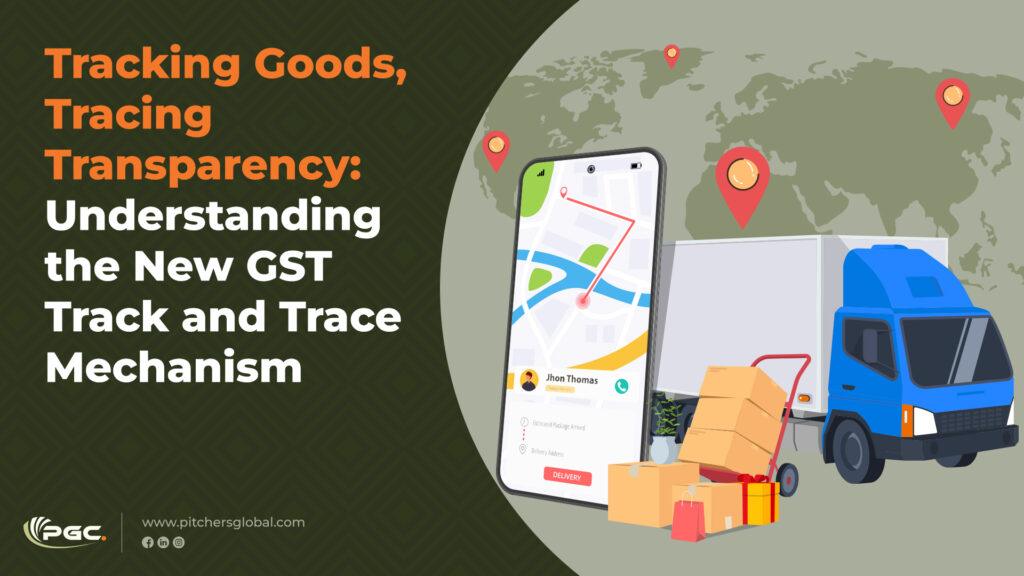Understanding the New GST Track and Tracking Goods, Tracing Transparency: Understanding the New GST Track and Trace Mechanism
In a move aimed at bolstering transparency and accountability within the supply chain, the government has implemented a Track and Trace Mechanism for specified commodities under the GST regime. This initiative represents a significant step towards curbing tax evasion, preventing counterfeiting, and ensuring the authenticity of goods. Let’s delve into the details of this new system and understand its implications.

What is the Track and Trace Mechanism?
The Track and Trace Mechanism is a system designed to monitor the movement of specified goods throughout the supply chain, from the point of origin to the final consumer. This is achieved by assigning a unique identification marking to each unit of the specified commodity. This marking allows authorities and consumers to verify the authenticity and origin of the product, ensuring that it hasn’t been tampered with or illegally diverted.
Key Changes to the CGST Act:
To facilitate the implementation of this mechanism, several key changes have been made to the CGST Act, 2017:
Defining “Unique Identification Marking”: A new clause (116A) has been added to Section 2 to define “unique identification marking.” This marking, crucial for tracking, includes digital stamps, digital marks, or any other similar marking that is unique, secure, and non-removable. This ensures the integrity of the tracking process.
Enabling Mechanism: A new Section, 148A, provides the legal framework for implementing the Track and Trace Mechanism. This section empowers the authorities to establish the necessary procedures and guidelines for tracking specified commodities.
Why TDS Rules is Important?
Curbing Tax Evasion: By tracking goods throughout the supply chain, the government can identify instances of tax evasion and ensure that the correct taxes are being paid.
Preventing Counterfeiting: Unique identification markings make it easier to identify counterfeit products, protecting consumers and businesses from fraudulent activities.
Ensuring Product Authenticity: Consumers can verify the authenticity and origin of products, giving them greater confidence in their purchases.
Improving Supply Chain Efficiency: The Track and Trace Mechanism can help businesses optimize their supply chains by providing real-time visibility into the movement of goods.
Boosting Consumer Confidence: By increasing transparency and reducing the risk of counterfeiting, the Track and Trace Mechanism can boost consumer confidence in the market.
What Does This Mean for Businesses and Consumers?
For Businesses: Businesses dealing with specified commodities will need to implement systems for applying and tracking unique identification markings. This may require investments in new technology and processes. However, the long-term benefits of increased transparency and reduced counterfeiting will outweigh these initial costs.
For Consumers: Consumers will benefit from increased confidence in the authenticity and origin of the products they purchase. They may also have access to tools that allow them to verify the unique identification marking of products.
Looking Ahead in TDS Rules:
The implementation of the GST Track and Trace Mechanism is a significant step towards creating a more transparent and accountable marketplace. It will play a crucial role in curbing tax evasion, preventing counterfeiting, and ensuring the authenticity of goods. As the system evolves, we can expect further refinements and expansion to cover more commodities. Businesses and consumers should stay informed about these developments and adapt their practices accordingly. This move will ultimately benefit all stakeholders by promoting fair competition and building greater trust in the supply chain.
Learn more from Pitchers Global Today..
